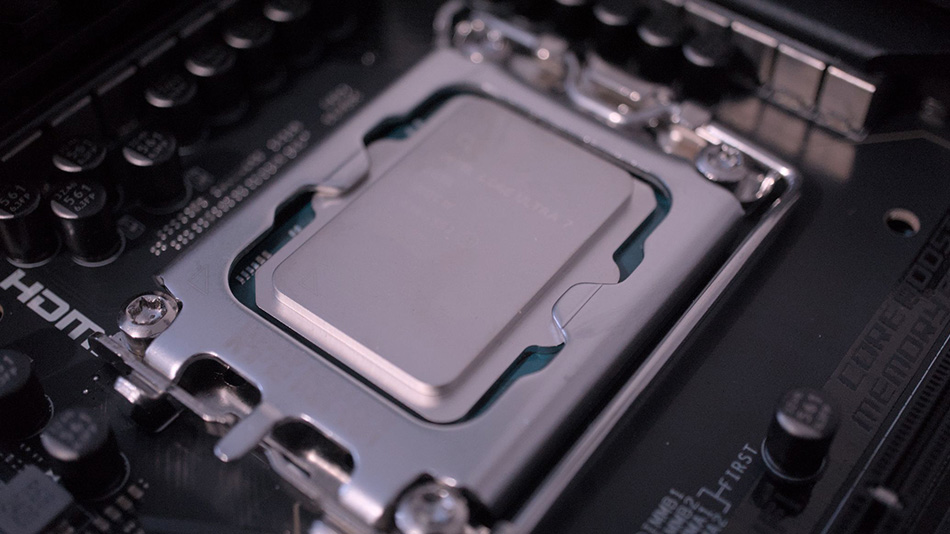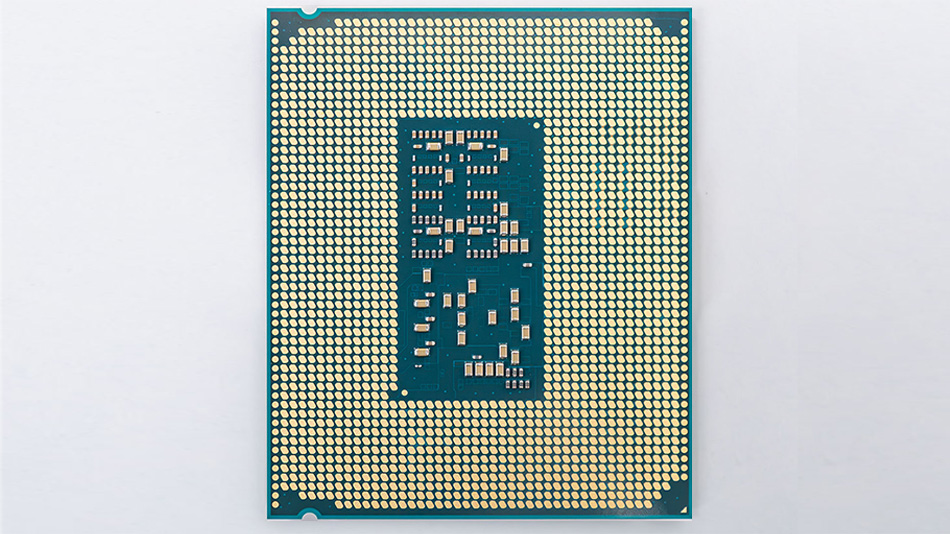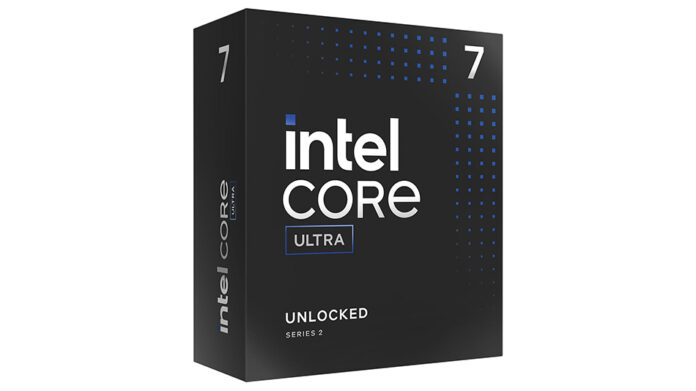Intel recently launched the Core Ultra 200 series, marking a notable evolution in desktop processor architecture. The Intel Core Ultra 7 265K is part of this new lineup that offers major technological innovations. Unlike previous models, this one is not monolithic.
This new series adopts a structure composed of four autonomous silicon tiles. Each of these tiles is dedicated to specific tasks, thus optimizing performance and thermal management, which represents a significant step forward for Intel.
Foveros technology at the heart of the Intel Core Ultra 7 265K
With the Core Ultra 7 265K, Intel is leveraging a technology called Foveros. The latter is combined with a silicon interposer. The whole thing allows for improved data transfer rates. This hybrid design contributes to better energy efficiency. The flagship models in this series, including the Core Ultra 9 285K and the Core Ultra 7 265K, abandon Hyper-Threading. This decision appears to be motivated by security concerns and the need to improve certain workload performance. The efficient cores, designated E-Cores, have also benefited from significant changes in this architecture. They now have shared access to the L3 cache and show a notable increase in their IPC (Instructions per Cycle).

Increased performance for an optimized user experience
With the Core Ultra 7 265K, users can therefore expect increased responsiveness. Running demanding applications and managing tasks remains smoother. The Core Ultra 7 265K offers a 3% increase over its predecessor, the Core i7-14700K. The Core Ultra 9 285K is positioned as around 7% faster. One of the most impressive aspects of this series is the support for DDR5 memory. Speeds of over 8000 MT/s can then be achieved. This improves application performance and optimizes the user experience in multimedia and gaming tasks.
Intel Core Ultra 7 265K, a redesigned architecture for energy efficiency and AI
The Core Ultra 200 series introduces significant improvements in the integrated graphics architecture. The latter doubles the performance compared to that of Raptor Lake. Among other things, this series consumes an average of 108 W, a reduction of 30% compared to the Core i7-14700K. In gaming mode, this consumption even drops to around 77 W compared to 116 W for its predecessor. Intel’s new Arrow Lake processors integrate a NPU (neural processing unit). The latter is intended to accelerate artificial intelligence operations, although its impact is still limited compared to current CPUs and GPUs. This innovation paves the way for future AI applications, promising better energy efficiency.
Verdict
The Intel Core Ultra 200 series features an improved architecture, optimized performance, and energy efficiency. It offers a robust solution for users who require multitasking capabilities. Despite some stability and compatibility issues, the future of the Core Ultra series looks bright with upcoming updates and optimizations.
| What we like |
|---|
| – Excellent application performance – Solid price, considering the performance – Good power efficiency – Easy to keep cool – PCIe Gen 5 SSD without compromising GPU bandwidth – Unlocked overclocking |


